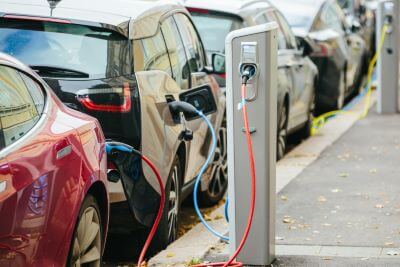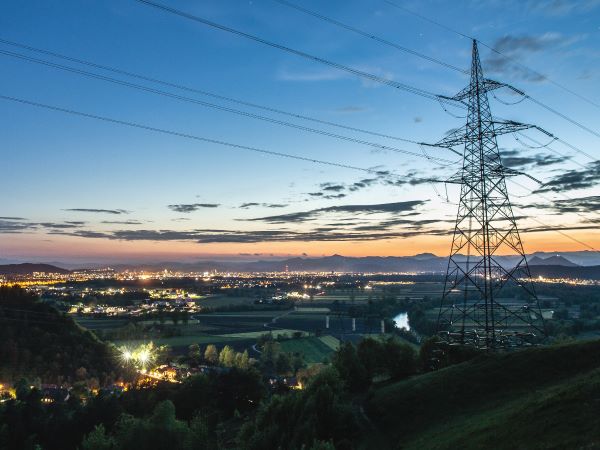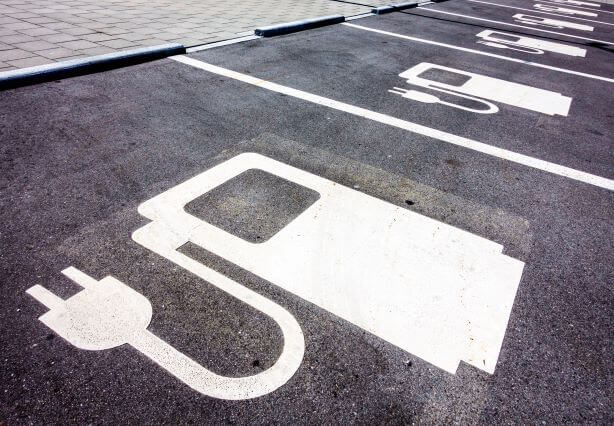Supporting the Future of Electric Vehicles

September 12, 2023
On roadways across America, the future looks positively electric. The transportation landscape is undergoing a profound transformation, driven by a global shift towards sustainable and eco-friendly solutions. Electric vehicles (EVs) have emerged as a front-runner in this revolution, promising cleaner air, reduced carbon emissions and a greener future for generations to come.
Will these zero-emission vehicles pose any limitations or perhaps provide benefits to the power grid or affect design and infrastructure planning? What are the pros and cons of moving in the direction of EVs in the next decade or so in transportation, power and renewable energy?
As adoption of EVs accelerates and grows more and more popular, these questions, challenges and opportunities alike come into sharper focus to navigate this transition in the right direction.
The Intersection of EVs, Power and Renewables
The road to electric mobility is already well underway, with EVs becoming an increasingly common sight on American roads. As of 2023, more than three million EVs are driven, accompanied by 130,000 public chargers across the nation, according to data from The White House. This data is in tandem with new standards from the U.S. Environmental Protection Agency, proposing new federal emission standards striving for 67 percent of new light-duty vehicles and one quarter of heavy-duty trucks sold nationwide to be fully electric by 2032.
Perhaps the most significant advantage of EVs lies in their potential to reduce carbon emissions and improve air quality. By eliminating tailpipe emissions, EVs reduce the release of harmful pollutants that contribute to air pollution and respiratory diseases. This cleaner air translates into better public health outcomes and a higher quality of life for communities. As renewable energy sources become more integrated into the power grid, the lifecycle carbon footprint of EVs will continue to decrease, making them an even more environmentally friendly choice.
Transportation Challenges: Beyond the Road
While the transition to EVs offers numerous benefits, questions arise regarding their future in the framework. It goes beyond creating efficient and eco-friendly vehicles; it also encompasses significant challenges that affect road infrastructure and legislative policies. The adoption of EVs necessitates the development of widespread charging infrastructure, with a focus on addressing range anxiety and providing equitable access.
A shift to EVs also comes with a weighty impact on road infrastructure. Converting vehicles to electric power often results in increased weight, impacting roads and potentially accelerating wear and tear. “When you look at the weight of any given vehicle and convert that vehicle to an electric vehicle, there’s more weight, and that has an impact on the roads, the costs and how much we’re going to be putting into the design and construction of roads going forward,” says Aaron Lauinger, Market Director for Ulteig’s Transportation and Water Lifeline Sectors®.
Looking forward, another major point of discussion is how the loss of gas tax revenues will fund both the Highway Trust Fund and local roads that are funded by state gas taxes, on top of the federal gas tax, as more drivers switch to EVs. “How are we going to cover those costs from a legislative perspective?” asks Lauinger. “A lot of funding, particularly for interstate roads, state highways and local roads are done through the gas tax. And when you don’t put gas in a vehicle, now you deplete your funding.” In the transportation segment, legislative changes will be needed to determine alternative funding sources.
Utilities Challenges: Supply and Demand
Mark Scheid, Market Director for Ulteig’s Power Lifeline Sector®, succinctly points out, “The single biggest challenge to utilities in dealing with (EV) load is demand.” Though the power grid won’t see any major changes in demand before EV adoption reaches and exceeds 50 percent, without some sort of smart controls, electric utilities will face new challenges in managing loads from home and fleet charging since peaking demand from simultaneous charging could strain systems.
There is one potential solution: “Time of use rates have been around for decades. But utilities are now designing new TOU rate structures to address the nuances of electric vehicle charging,” notes Scheid. “So, as long as you are willing to work your (EV) charge times, I think most people, from a home charging perspective, are willing to do that.”
Addressing Environmental Concerns: A Holistic Approach
While EVs offer substantial environmental advantages, the increased demand for EVs leads to heightened battery production, raising concerns about resource extraction, disposal and recycling. An EV battery, for instance, can hold 20 to 100 times more energy than its hybrid vehicle counterpart, which is generally composed of lithium-ion and is recyclable. Auto manufacturers will need to take a complete, holistic approach in the manufacture of EV batteries to ensure that, while recyclable, their acids and other chemicals aren’t harmful to the environment over time.
New Opportunities on the Horizon
A complete transition away from gas vehicles — if possible — is still years away. It remains to be seen if technology and infrastructure limitations will pose an impact on accommodating large fleets of commercial vehicles (think long-haul trucking, shipping and aviation), since electrifying these sectors and their increased payload weights, routes and refueling logistics face significant headwinds.
However, promising research and development in years to come points to a more fruitful future for EVs. One opportunity is considering how transportation infrastructure accommodates and incorporates EV charging options — the National Electric Vehicle Infrastructure (NEVI) program is trying to drive investment in charging stations within one mile of interstates, every 50 miles, to reduce range anxiety specifically for interstate and rural travel, according to Scheid.
Abundant partnerships are also in the EV planning foreground. “If we’re redesigning some transportation infrastructure, and it makes sense to align charging infrastructure in that same area, that means bringing together utilities and government agencies responsible for the roads,” says Scheid, noting Ulteig’s involvement. “It means we have a seat at the table as legislation is talked about and addressed.”
Ulteig is also developing tools and software for other applications — a potential opportunity to utilize those skill sets to help solve industry challenges. “That’s our real long-term vision,” says Scheid, “to be supportive of that need.”
Navigating the Road Ahead
The future of electric vehicles in America holds immense promise, with the potential to revolutionize transportation, reduce emissions and drive a more sustainable future. As EV adoption gains momentum, the importance of comprehensive solutions cannot be overstated. Ulteig is well-positioned to address the challenges and opportunities presented by the EV revolution, ready to help pave the way for a cleaner, greener and more efficient future on America’s roads.
Learn more about our work in the Transportation Lifeline Sector, or contact us for more information.
WHAT MAKES ULTEIG DIFFERENT?
From global energy producers to locally funded cities and private developers to government agencies, the clients we serve encompass a broad range of relationships and projects. Find out why Ulteig is a leader in the engineering industry.
Contact Us


